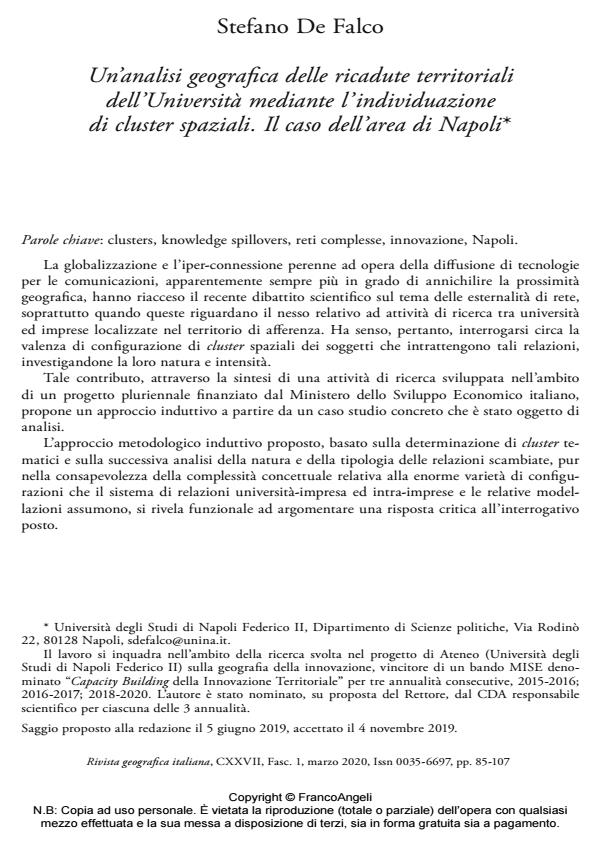A geographical analysis of the territorial impact of the University by identifying spatial clusters. The case of the Naples area
Journal title RIVISTA GEOGRAFICA ITALIANA
Author/s Stefano De Falco
Publishing Year 2020 Issue 2020/1
Language Italian Pages 23 P. 85-107 File size 254 KB
DOI 10.3280/RGI2020-001004
DOI is like a bar code for intellectual property: to have more infomation
click here
Below, you can see the article first page
If you want to buy this article in PDF format, you can do it, following the instructions to buy download credits

FrancoAngeli is member of Publishers International Linking Association, Inc (PILA), a not-for-profit association which run the CrossRef service enabling links to and from online scholarly content.
Globalization and the perennial hyper-connection due to the diffusion of communications technologies more and more apparently capable of annihilating geographical proximity, has aimed the recent scientific debate on the topic of network externalities, especially when these concern the relation relative to activities of research between universities and businesses located in the territory of reference. It makes sense, therefore, to critically reflect about the significance of spatial cluster configuration of the subjects who entertain such relationships, investigating their nature and intensity. This contribution, through the synthesis of a research activity developed as part of a multi-year project financed by the Italian Ministry of Economic Development, proposes an inductive approach starting from a concrete case study that has been analyzed. Even with the awareness of the conceptual complexity related to the enormous variety of configurations that the system of university-business and intra-companies relations and the related modeling assume, the proposed inductive methodological approach, based on the determination of thematic clusters and the subsequent analysis of nature of the typology of the exchanged relationships, it is functional to argue a critical answer to the question posed.
Keywords: Clusters, knowledge, spillover, complex network, innovation, Naples.
Stefano De Falco, Un’analisi geografica delle ricadute territorialidell’Università mediante l’ individuazione di cluster spaziali. Il caso dell’area di Napoli in "RIVISTA GEOGRAFICA ITALIANA" 1/2020, pp 85-107, DOI: 10.3280/RGI2020-001004